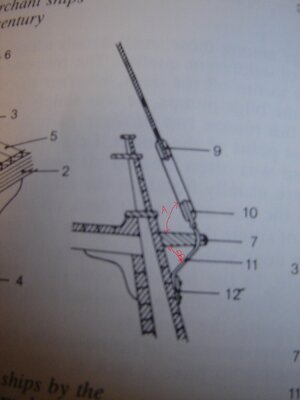Did deadeye chains always anchor to the wales
-
LUCZORAMA SHIPWRECK SCAVENGER HUNT GIVEAWAY. 4 Weeks of Fun • 1 Legendary Prize ((OcCre’s Fram Ship)) • Global Crew Welcome!
**VIEW THREAD HERE**
You are using an out of date browser. It may not display this or other websites correctly.
You should upgrade or use an alternative browser.
You should upgrade or use an alternative browser.
NoDid deadeye chains always anchor to the wales
often you can see it, that the chain bolting is at the height of the wales, but it was not a must because of the wale
These bolts went completely through the ship structure, so usually were bolted against a frame and sometimes the inner clamps of the beams
The location of the bolt fixing was more defined by the geometrie of the two triangles which were "transporting" the forces from the mast top via the shrouds towards the edge of the channel via the chain into the hull
The sipwrights experimented a longer time to get the better results.
Also the location of the channels were in earlier times above the gunports - later one they moved the channels down under the level of the gunports
Here two examples were the bolts were not in the height of the wales
Saint Phillippe
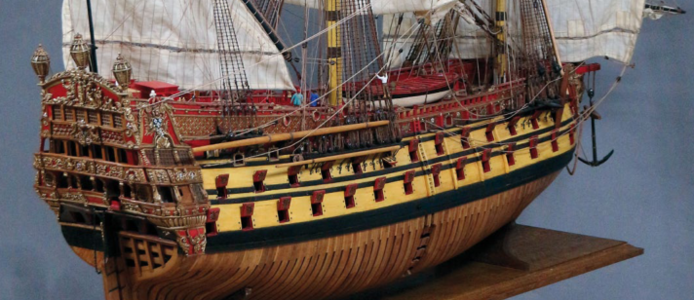
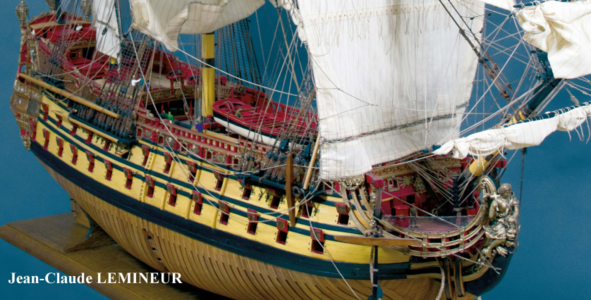
La Mahonesa
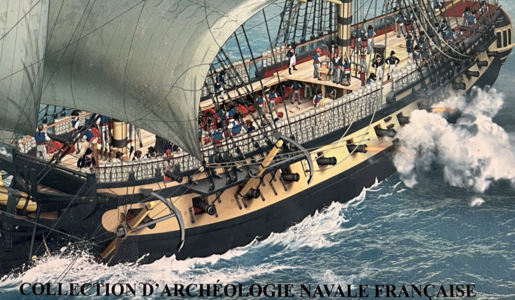
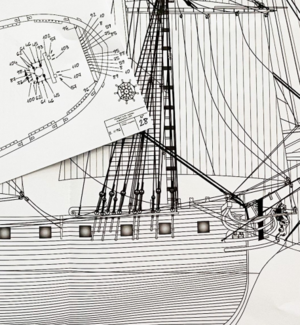
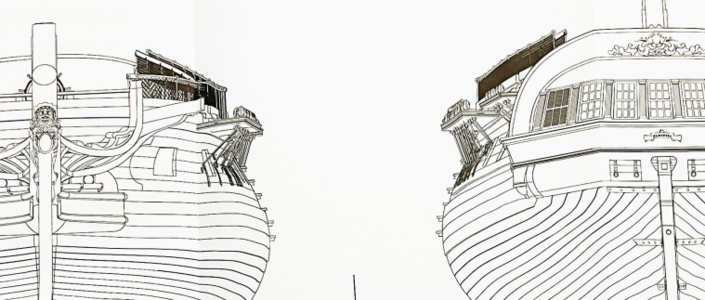
I just came across the drawing of the La Belle Poule which had a very special hull cross section
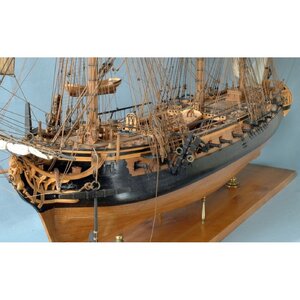
The red arrow marks the height where the pulling forces from the chain (from shrouds from mast) are transfered via the bolt into the hull structure
The green arrows mark the bolts which are shown here in the cross section
btw: the lower bolt was usually not taking much forces, they were mainly there in case the upper bolt would fail
you can see, that the upper (most important bolt) is not passing the wale
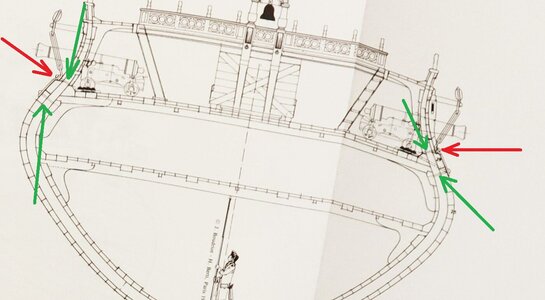

The red arrow marks the height where the pulling forces from the chain (from shrouds from mast) are transfered via the bolt into the hull structure
The green arrows mark the bolts which are shown here in the cross section
btw: the lower bolt was usually not taking much forces, they were mainly there in case the upper bolt would fail
you can see, that the upper (most important bolt) is not passing the wale

Thank you very much Uwe 
Kurt Konrath
Kurt Konrath
I think you have to look at each ship and its size and purpose to determine what the proper angle is.
Its is more about where they attach to a specific ship than at what angle they are at.
On some ships they have no or small channels (item 7 in above drawing) to hold deadeye and the chains or ropes that hold them down, other like big Man of War ships have larger wider ones.
Its is more about where they attach to a specific ship than at what angle they are at.
On some ships they have no or small channels (item 7 in above drawing) to hold deadeye and the chains or ropes that hold them down, other like big Man of War ships have larger wider ones.
- Joined
- Oct 17, 2020
- Messages
- 1,649
- Points
- 488

I echo Uwe with this imageI just came across the drawing of the La Belle Poule which had a very special hull cross section
View attachment 343456
The red arrow marks the height where the pulling forces from the chain (from shrouds from mast) are transfered via the bolt into the hull structure
The green arrows mark the bolts which are shown here in the cross section
btw: the lower bolt was usually not taking much forces, they were mainly there in case the upper bolt would fail
you can see, that the upper (most important bolt) is not passing the wale
View attachment 343455
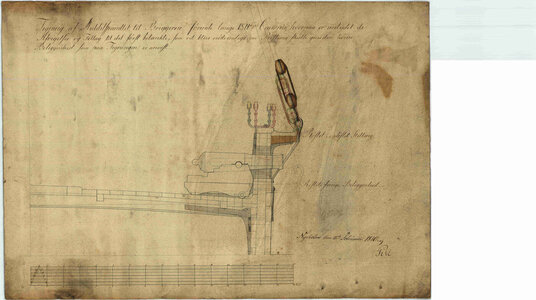
Uwe wrote
"The location of the bolt fixing was more defined by the geometrie of the two triangles which were "transporting" the forces from the mast top via the shrouds towards the edge of the channel via the chain into the hull"
I'm thinking that the two triangles he mentions are one above the channel and one below the channel with the channel being the common side between the two. I'm thinking that the angles "A" and "B" have to be roughly equal to stop the channel from being pulled up or down. I order to keep the forces equal if the mast is taller then the chains would have to be attached lower on the hull. So the chain length depends on the mast height and vice versa.
Sound good?
"The location of the bolt fixing was more defined by the geometrie of the two triangles which were "transporting" the forces from the mast top via the shrouds towards the edge of the channel via the chain into the hull"
I'm thinking that the two triangles he mentions are one above the channel and one below the channel with the channel being the common side between the two. I'm thinking that the angles "A" and "B" have to be roughly equal to stop the channel from being pulled up or down. I order to keep the forces equal if the mast is taller then the chains would have to be attached lower on the hull. So the chain length depends on the mast height and vice versa.
Sound good?
This was a misunderstanding - I did not want to express, that the angles should be the sameUwe, are you saying that angle "A" should be about the same as angle "B".
I borrowed the picture from Mondfeld.
Sorry for the faint red lines
View attachment 344611
with triangles I wanted to explain these two trinagles like marked in the plan posted by Frank (btw a very good drawings - thanks)Uwe wrote
"The location of the bolt fixing was more defined by the geometrie of the two triangles which were "transporting" the forces from the mast top via the shrouds towards the edge of the channel via the chain into the hull"
I'm thinking that the two triangles he mentions are one above the channel and one below the channel with the channel being the common side between the two. I'm thinking that the angles "A" and "B" have to be roughly equal to stop the channel from being pulled up or down. I order to keep the forces equal if the mast is taller then the chains would have to be attached lower on the hull. So the chain length depends on the mast height and vice versa.
Sound good?
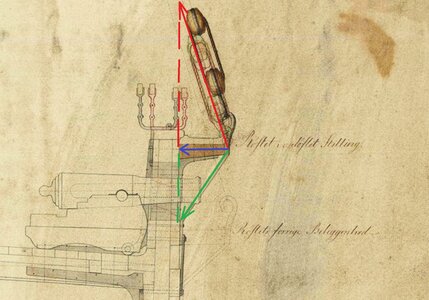
The forces have to be in balance - otherwise some part will brake
I don't understand. I don't see what makes that "in balance". But don't feel obligated to try to explain it to me. That would be a lot of typing 
OH. For starters does in balance mean that there is no up or down force on the channel?
OH. For starters does in balance mean that there is no up or down force on the channel?
I think so - from static point of view the forces should result into horizontal via the channel against the bulkhead - (my blue arrow)I don't understand. I don't see what makes that "in balance". But don't feel obligated to try to explain it to me. That would be a lot of typing
OH. For starters does in balance mean that there is no up or down force on the channel?
Sorry - I am civil engineer for bridges, so I see often in a ship statical systems - similar like on bridges


